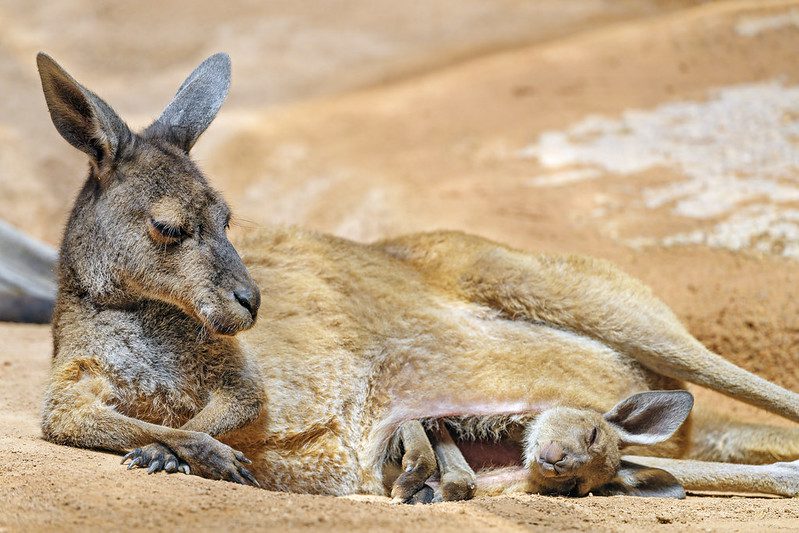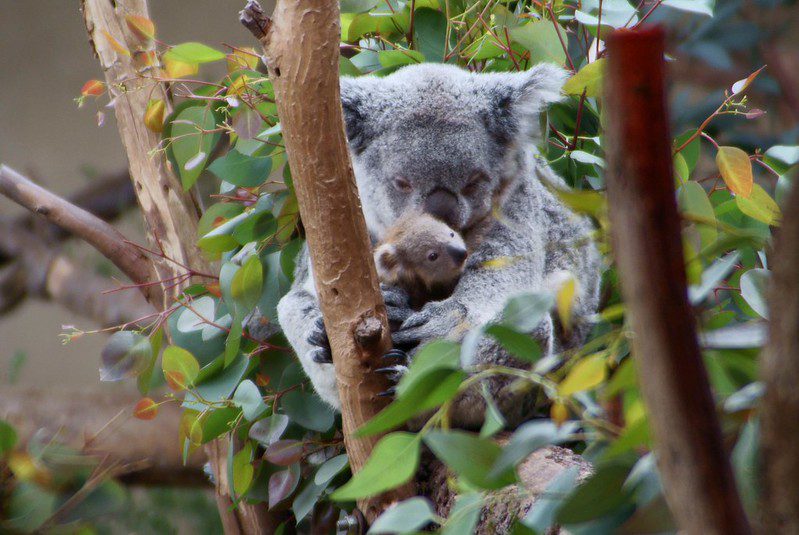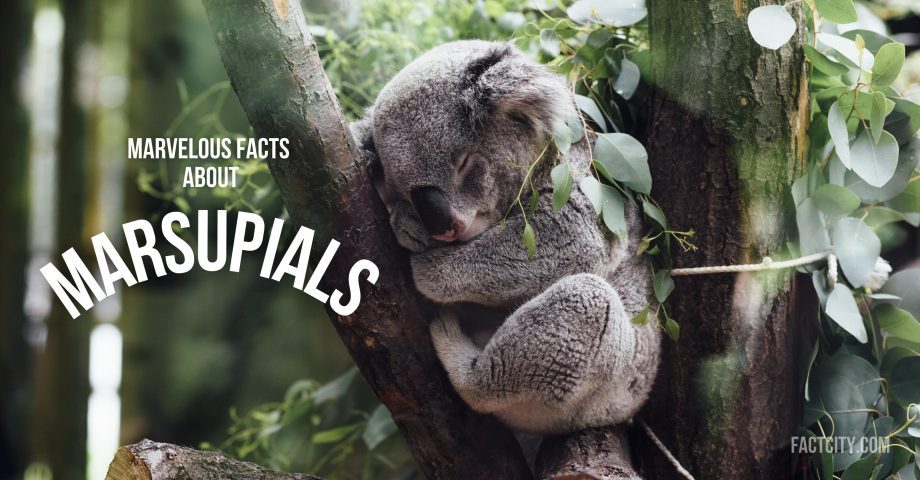Marsupials are known for a few things. Their signature pouches, their Australian habitats, and many of them are pretty adorable – so, let’s get to know more about these incredible animals! Here are some seriously fun facts about marsupials!
1. Marsupials are only found in two or three continents, tops.
Marsupials typically live in the wild in Australia, Papua New Guinea, and nearby islands. However, some species are also found in the Americas. If you see them anywhere outside of those nations, they’ll have been imported! You’ll find some marsupials call zoos home across Europe if you can’t travel far.
2. There are 330 different marsupial species, and you can probably name a few.
Around two-thirds of all 330 known marsupials on our planet live in Australia! The best-known marsupials include kangaroos, wallabies, koalas, wombats, and Tasmanian devils. The latest marsupial discovered at the time of writing is an extinct wombat-like beast found near Alice Springs, Australia.
3. Marsupials are typically identifiable by features on their stomachs.
Marsupials are most easily recognizable by their most iconic feature; the pouch. A marsupial’s pouch is a specialised flap of skin on the female’s abdomen where they carry and nurse their underdeveloped offspring. They’re referred to as being born “incomplete!”

4. Marsupial pregnancies don’t finish in the womb.
Marsupials are also known for having a unique reproductive process! After a short gestation period, typically around 30 days, the tiny, premature offspring, called “joeys,” are born. Unlike placental mammals, marsupial joeys are born at a very early stage of development and are often blind and hairless.
5. Joeys instinctively know where to go to nurse and develop.
You don’t have to worry too much about the underdeveloped babies, though! Immediately after birth, the joey crawls into the mother’s pouch, where it attaches to a teat and continues to develop and nurse for an extended period. For kangaroos, this period is likely to last around eight months.
6. Kangaroos are the biggest marsupials on the planet.
As you might have guessed, kangaroos are the largest living marsupials. Red kangaroos are the biggest among them. Males can reach heights of over six feet (1.83m) and weigh up to 200 pounds (90.7kg)!
7. Koalas aren’t bears, they’re marsupials.
A common mistake people make is assuming that koalas, also known as koala bears, are, in fact, bears! As it happens, they are marsupials – it’s thought that European settlers in Australia originally called koalas bears as they have an ursine look.
8. Some marsupials are carnivores, and others are herbivores.
Another strange thing about this species is that they do not all eat the same things! For example, kangaroos and wallabies are herbivores, whereas Tasmanian devils are
carnivorous!
9. “Drop bears” aren’t real marsupials – it’s a hoax.
You didn’t hear it from us, but the fabled Australian “drop bear” is a bit of a myth. These creatures are said to be koala-like marsupials that hang out for hours in trees and then “drop” on unsuspecting prey. Typically, tales about drop bears emerged to scare tourists new to Australia!

FAQs about Marsupials
Why are some animals called marsupials?
The term “marsupial” actually comes from the adult females’ pouches. These pouches are also known as the marsupiums, and they are unique to this animal species.
Why are marsupials not mammals?
Marsupials are, in fact, mammals. However, they are unique from other mammals in that they raise their young in their external pouches. They are different from placental mammals, which complete the embryo development inside the placenta of the mother. Therefore, you would still commonly call kangaroos, koalas and Tasmanian devils mammals – they’re just a specific type.
Are there any marsupials in Europe?
There are no marsupials native to Europe. However, there are plenty of zoos and wildlife rehabilitation centres in Europe that house some of these very special creatures. If you would like to see a marsupial in its native land, though, it is best to head to one of its home countries. People often visit Australia to see marsupials such as koalas, kangaroos, and wallabies – why not see if you can spot one of each 330 species?
Further reading:
https://facts.uk/tag/Animals
https://ucmp.berkeley.edu/mammal/marsupial/marsupial.html
https://australian.museum/learn/species-identification/ask-an-expert/what-is-a-marsupial/
Do you know any fun facts about marsupials? Share them in the comments below!










